
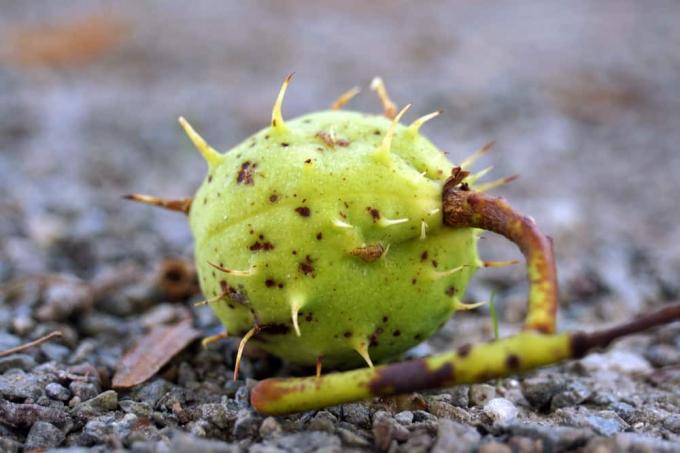
Table of contents
- Solitary trees for large gardens
- House trees for small gardens
Classic house trees are an important part of designing your own garden. With the distinctive trees, new rooms can be created and conscious accents set. In addition, trees provide pleasant shade from the hot sun rays in summer. However, there are a few important points to consider when choosing, planting and caring for them so that there are no problems with growth.
Solitary trees for large gardens
Important criteria must be observed when selecting a solitary tree, as these usually have immense growth potential. Therefore, the achievable width and height of the selected tree must be taken into account in relation to the space available and the overall size of the property. Above this, a swing can be hung up for the offspring and the branches can be used for climbing. The wood also acts as a screen and windbreak. The location and soil requirements of the tree species, which must be given on site, are also decisive. In addition, sufficient distance must be maintained when planting the tree to the neighboring property, even if it is fully grown. Shrubs, which are an eye-catcher at any time of the year, are particularly beautiful. Some varieties inspire with a special flower, a bright autumn color, a distinctive fruit hanging or a characteristic growth habit.
Tip:
With regard to the distances to the neighboring property, each federal state has different regulations that must be observed. There is information about this in the respective neighboring law.
maple

The maple bears the botanical name acer and is a particularly robust house tree, which is very well suited for cultivation in local gardens for this reason. The tree fascinates with the shape and rich colors of its leaves, which represent a striking splash of color in botany. These continue to change color intensively in autumn for a long time, when other garden plants have lost their colors or even their leaves for some time.
- Leaves inspire with yellowish to orange-red autumn colors
- Needs sunny places to form bright colors
- Grows up to 30 feet tall
- Prefers well-drained, sandy-loamy soils
- Slightly acidic to neutral soil pH is ideal
- Elevated locations prevent harmful waterlogging in the root area
- Sufficient wind protection required, e.g. B. in front of the house or a wall
beech

The beech bears the botanical name Fagus and is a widespread house tree whose authentic growth captivates the viewer. The wood produces nuts known as beechnuts, which are a popular source of food for the garden's residents. Beeches can be several centuries old, but only develop the characteristic beech nuts after a few decades.
- Can grow up to 45 m tall
- Requires sprawling locations with plenty of space
- Sunny to partially shaded conditions are ideal
- Prefers loamy soil qualities with sand or gravel
- The substrate should be permeable, slightly moist and rich in nutrients
- A neutral pH value in the soil is ideal
- Does not tolerate high lime content in the soil
- Sufficient wind protection is required for young plants
Oak

The oak is called in botany Quercus and is a popular house tree, especially in rural areas, which fascinates with its gnarled branches and distinctive leaves. The plants have an impressive life span that can stretch over many centuries. For this reason, the oak can accompany many generations of a family.
- Requires sufficient space at the location
- Open spaces with lots of light are ideal, partial shade is also tolerated
- Trunk can reach a circumference of 15 m, grows up to 40 m high
- Forms a spreading crown
- Prefers deep and well-drained soil
- A loamy substrate is ideal
- Tolerates acidic to basic soil pH
- Do not plant in the reach of pipes and house walls
- Roots can cause damage
Jaw
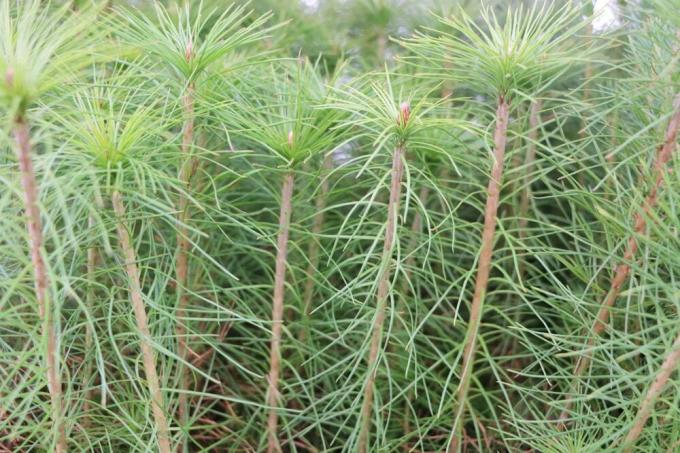
The pine bears the botanical name Pinus and is a robust conifer that, depending on the variety, has either a sprawling, slender or spherical growth habit. There is a large selection of pine species that can be perfectly adapted to site conditions and personal preferences. The house tree is often cultivated in the home garden because it is very easy to care for.
- Prefers sunny and open locations
- Needs nutrient-rich, moist and deep soil qualities
- Forms strong taproots
- An acidic to neutral soil pH is ideal
- The Scots pine is particularly large, growing up to 50 m high
- Keep sufficient distance to house walls and neighboring properties
- Pine needles exude a pleasant, resinous scent
chestnut

The chestnut bears the botanical name Castanea and is easily recognizable by its conspicuously serrated leaves and nut fruits. The edible chestnuts are embedded in a hairy and prickly outer shell and fully ripen in autumn. Forms distinctive inflorescences before the fruits, which have a high ornamental value. Both the flowers, leaves and nuts are often used for handicrafts and decorations.
- Needs sunny locations with plenty of space
- Can reach heights of growth of up to 40 m
- Do not plant in the immediate vicinity of house walls or property lines
- Prefers well-drained, fresh, moist and deep substrate
- A neutral to basic soil pH is ideal
- Pay attention to lime-free soil quality
- Requires high levels of phosphorus and potassium in the soil
Spruce

The spruce is called in botany Picea and is a fast-growing conifer that impresses with its upright habit. In terms of site conditions, this house tree is very frugal, as well as when it comes to care. The spruce branches are covered with dark green and sharp needles that remain on the tree for many years. This hardy conifer works well as winter protection for other garden plants.
- Is satisfied with partially shaded locations
- Prefers places sheltered from the wind
- Forms shallow roots and requires sufficient space
- Plan enough distance to house walls and neighboring plants
- Moist, humus-rich, well-drained and sandy soil qualities are ideal
- Make sure the soil has an acidic to neutral pH value
- Spruce twigs are well suited for decorative purposes and as winter protection
fir
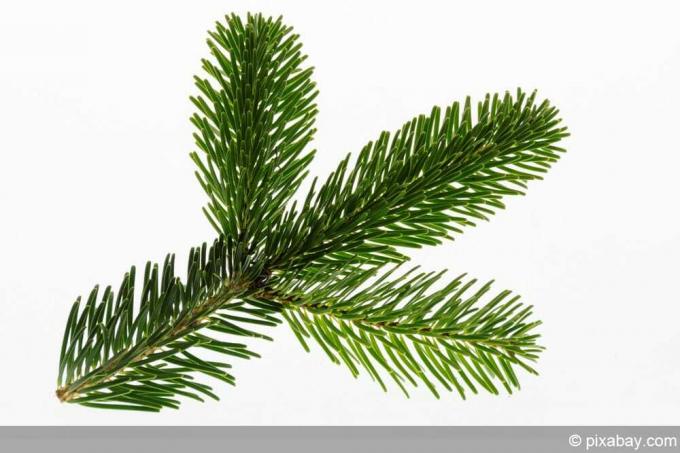
The fir bears the botanical name abies and is a traditional decorative tree in many households, especially at Christmas. However, it is much more environmentally friendly to plant the Christmas tree in the garden and enjoy this decorative garden element beyond the Christmas period. The classic house tree convinces above all with its densely leafy and evergreen needle shoots.
- Does well in both sunny and shady locations
- Moist, humus-rich and nutrient-rich soil qualities are ideal
- Taproots need loose and deep soil
- An acidic to neutral pH value of the soil is ideal
- Is extremely hardy, tolerates temperatures from -23° C to -45° C, depending on the variety
- Fir branches can be used as winter protection for other plants
House trees for small gardens
Nowadays the gardens are getting smaller and smaller, but the classic house tree can still be planted, in a smaller version. Small and slow-growing house trees are ideal for clearly arranged gardens. These need many years to reach their final height and do not become too large and powerful even when fully grown. In this way, the trees adapt well to a manageable garden structure. There are many shapes to choose from, with columnar and spherical crowns that can be beautifully cut to size and hanging crowns with a graceful mourning shape. Depending on the variety, the house tree can also establish itself as a fruit provider. Regardless of its size, the house tree becomes an important part of the garden structure, providing pleasant shade and an attractive eye-catcher. In this way, the whole family can enjoy the house tree for many years.
apple tree

The apple tree bears the botanical name penalty and is a traditional fruit tree in Germany. This not only adorns the orchards, but also the home garden areas as an ornamental tree. The beautiful cup flowers seduce the viewer in spring with a white or pink sea of flowers. In addition, this house tree convinces with a good winter hardiness.
- Prefers a sunny location, also thrives in light semi-shade
- Can grow up to 10 m tall, crown up to 10 m wide
- Don't plant right next to a wall
- Deep, fresh, moist and humus-rich plant substrate is ideal
- Requires slightly acidic to neutral soil pH
- You can choose between varieties with high stems as well as half and low stem forms
- Frost hardy down to -40° C, does not require additional winter protection
birch
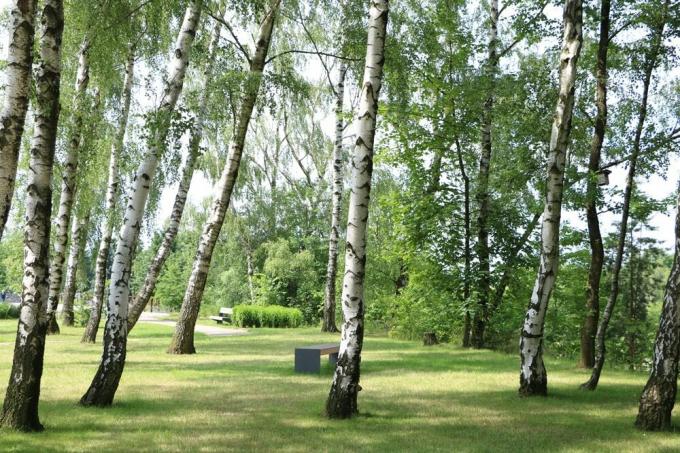
The easy-care birch is called in botany Betula and has been cultivated for many millennia as an ornamental and functional building in the local latitudes. Thanks to the silvery-white shiny trunk, the house tree is an extraordinary ornament for every garden. The serrated birch leaves shine in autumn with a strong yellow color and in this way set picturesque accents in the garden structure even towards the end of the year.
- Ornamental varieties are ideal for small gardens
- Does well in both sunny and partially shaded locations
- Needs moist plant substrate
- Gravelly, sandy or peaty clay and loam soils are ideal
- Make sure the soil has an acidic to neutral pH value
- All birch varieties are extremely frost-resistant down to -45° C
- Not suitable for pollen allergy sufferers
pasture
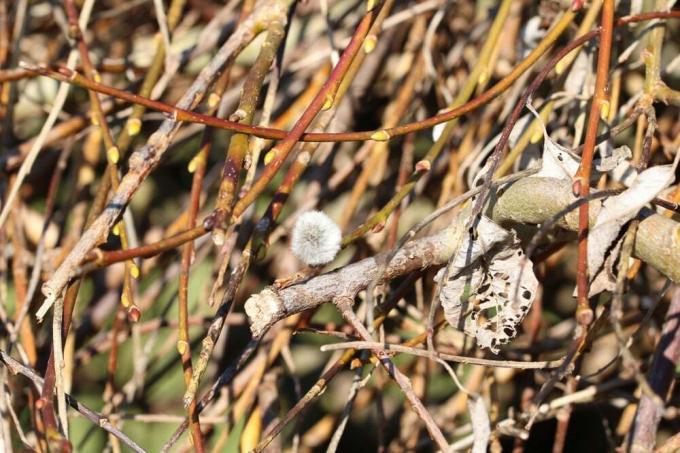
The willow bears the botanical name Salix and is preferred for planting in the garden by many tree lovers. The weeping willow, in particular, fascinates with its low-hanging branches, which grow flowing like a curtain of leaves. The dainty inflorescences of the willow tree are known as willow trees and unfold their colorful spectacle from spring to summer.
- Available as ornamental varieties for smaller gardens
- Prefers sunny locations
- Hardy down to -40°C
- Requires fresh-damp to wet-damp soil qualities
- Sandy-clayey or loamy-clayey plant substrates are ideal
- Copes with acidic to neutral soil pH
cypress
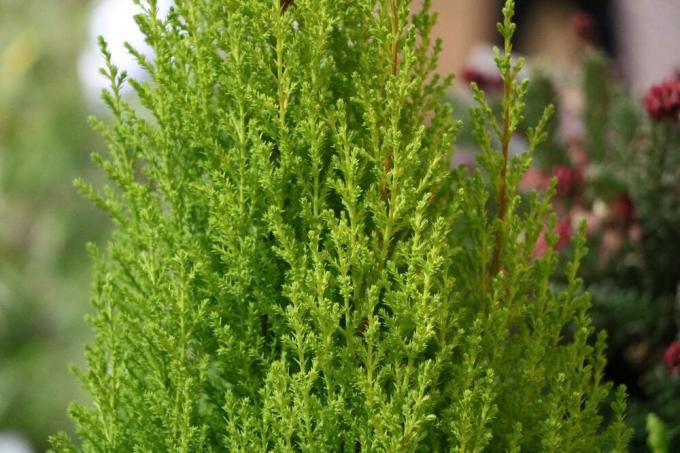
The evergreen cypress bears the botanical name Cupressus and comes from the Mediterranean region and has prevailed in the local latitudes for many centuries. This house tree is very frugal and green all year round, even when the temperature is below zero, the plants shine in bright shades of green. The cypress forms scales that cannot be compared to either leaves or needles.
- Pay attention to hardy cypress species
- Does well in both sunny and partially shaded locations
- Rock gardens offer the tree ideal conditions
- Prefers humus and sandy soil qualities
- A slightly acidic soil pH is ideal
- Growth forms range from compact columnar to hanging and sprawling
- Well suited as a windbreak
 garden editorial
garden editorial I write about everything that interests me in my garden.
Learn more about trees & shrubs

Corkscrew willow, Salix matsudana: 13 tips for care
The corkscrew willow is a popular garden tree due to its decorative growth. Especially in winter, the species has a special character that is created by the twisted branches. The maintenance effort for the ornamental tree is limited.

Cutting corkscrew willow: when is the right time?
The corkscrew willow only forms an attractive silhouette if its owner cuts it regularly. The right time for this care measure provides an overview and helps to get the crown in order in no time.
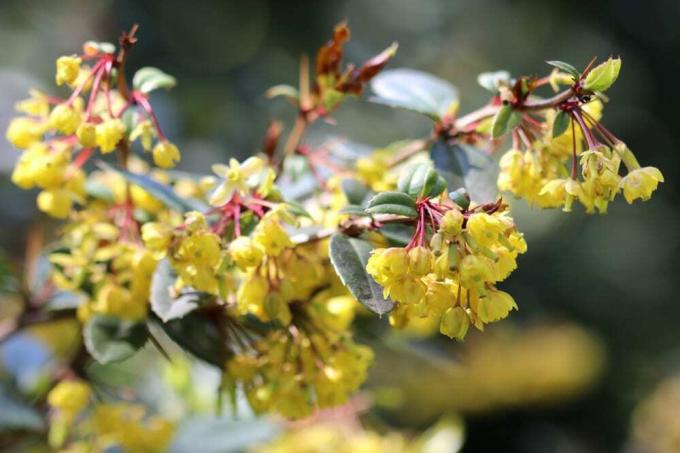
Barberry - care, pruning & propagation
Barberries have been banned from domestic gardens for decades because they serve as a winter host for the black rust fungus. Today, the easy-care and undemanding shrubs can be found more often in the garden. However, planting can be subject to conditions imposed by the Plant Protection Office.

Corkscrew hazel (Corylus avellana): care from A to Z
The care of the corkscrew hazel is not particularly complex. Once the tree has found the perfect location, it can live up to 100 years and reach considerable growth heights. The undemanding species can easily be propagated or regenerated if necessary.

Cut faded flowers when lilacs: why and when?
Lilac is one of the undemanding flowering shrubs that require little care and grow almost anywhere without much intervention by the gardener. When the fragrant inflorescences of the lilac have faded, you should cut them out. Find out here what you should consider when cutting the flowers.

Bush tree care: planting, planting spacing and pruning
The bush tree is a limited-growing tree that is ideal for smaller gardens. These low to medium-growing fruit trees are available in many varieties. In view of the rather small growth habit, a rich harvest can still be expected.
